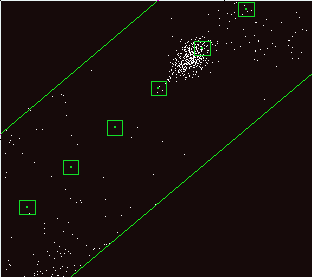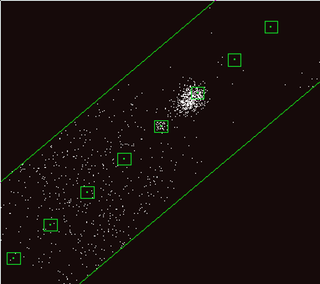PI Uwe Tangen and John MCCaskill, RUB
The experiment controlling software has been enabled with an approximate simulation facility. The movement of charged particles (e.g. DNA) between electrodes in a virtual channel of the chemical microprocessor is shown. We chose a particle

based simulation in order to be robust with respect to arbitrary control patterns on the electrodes. Though this simulation is physically not yet accurate, it is sufficient to develop higher order regulators. This simulation can in principle even be overlaid to real experiments thus directly comparing simulation and experiments. From the viewpoint of the experiment controlling software, this simulation is realized as a view of an attached camera. The walls of the channels are not

reflecting. Viscosity is high in these low Reynolds number scenarios, so particles don't have inertia, so we can take the Schmoluchowski limit and consider (biassed) random walk motion, and attempted moves outside the boundary are simply neglected.
The electric fields for this simulation are assumed to be a linear superposition of the individual electrode fields.
